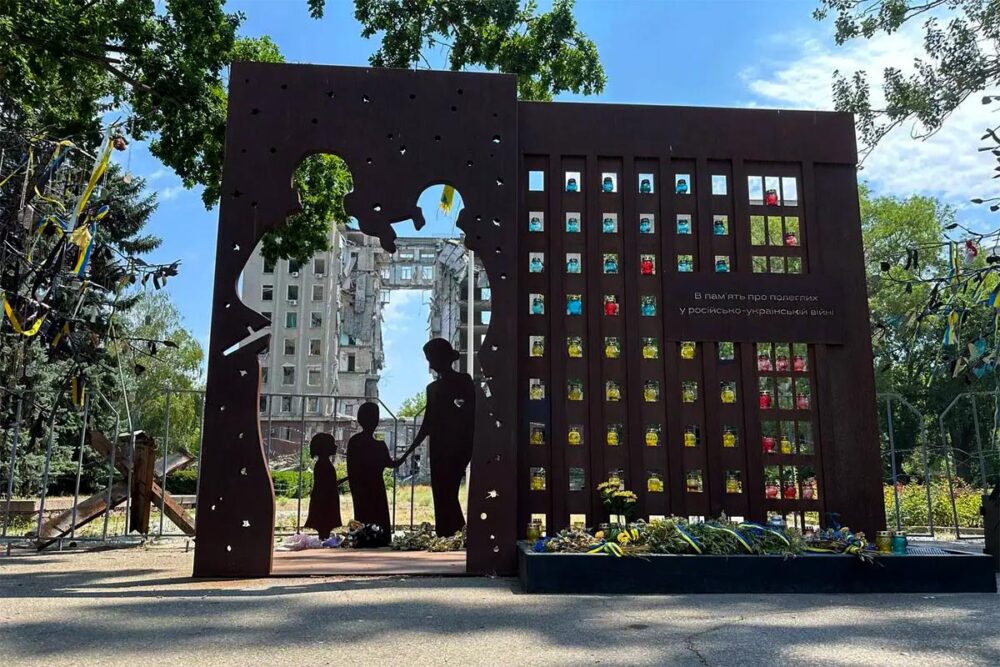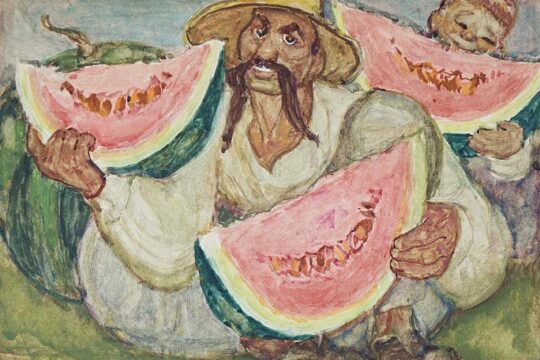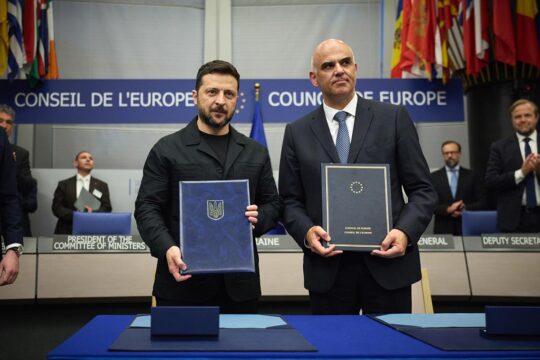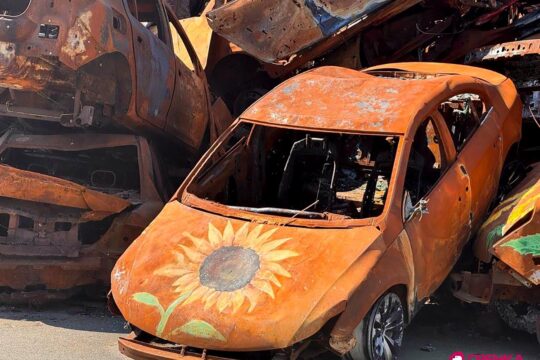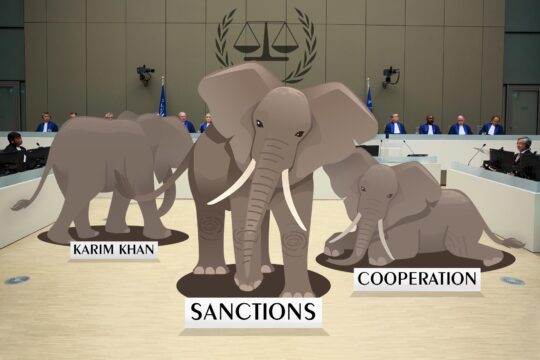Commemoration is the process of remembering, through the actualization of events and images, personalities of the past, in the context of contemporary views and needs. Commemorative practices are shaped not only by the state but also by society and citizens themselves. Authorities in Odesa, Mykolaiv and Kherson have slightly different ways of dealing with the memorialization of civilians.
In Odesa, when checking the database of citizens’ requests for events related to the memorialization of civilian victims, the city council has found nothing. Just like in Odesa, the Kherson regional military administration says that they have no record of initiatives to memorialize civilian victims. In Mykolaiv, the city council says it has no trace of any requests in 2022 and 2023, because of a cyberattack, but that it has received several requests since 2024.
In Mykolaiv, unlike in Odesa and Kherson, authorities do not distinguish between memorialization of the military and civilians. In Odesa, however, memorials for the military and civilians are often reunited on the same site, whereas, in Kherson, the city’s regional military administration itself has ordered to set up a specific project to honour the heroism of civilians.
A sakura alley for children in Odesa
According to Oleksandr Tykhovskyi, one of Odesa city council departments’ directors, the Odesa council itself “did not make a decision on the memorialization of civilian victims”. There are however memorials dedicated to civilians in Odesa, such as a sakura alley planted on 4 June 2024 near the regional military administration, as “a symbol of eternal memory of the fallen children,” Oleh Kiper, the head of the Odesa regional military administration wrote in a post on Telegram. “We remember every victim of the Russian terror. The strongest pain is when children die.”
A year later, bells were hung on the trees of the sakura alley, symbolizing the voices of children killed by the aggressor. The year before, on 4 June 2023, a “Voices of Children” action was held in the city garden of Odesa. And in August 2022, an installation, “Childhood.2022”, dedicated to children who died during the war, was set up near the military administration, with anti-tank guns and painted helmets with flowers.
According to Olena Oliynyk, director of the department of culture of the Odesa regional state administration, it symbolized “the foundation of spirituality, which will sprout with light colours even in such harsh realities”. For Andriy Lyubov, the artist who created the installation, each flower symbolizes a child whose life was taken by the war.
The shortcomings of the Odesa “Fighters for Ukraine” memorial
Behind the regional military building, in a “Glory and Freedom” park, a memorial to the “Fighters for Ukraine” is also meant to honour the memory and the names of not only the fallen soldiers, border guards, and law enforcement officers, but also those of civilians, such as rescuers, volunteers, and medics. This year, several NGOs, such as Veterans Hub Odesa, Hearts of mothers of Odesa region, and Family of angels of light, held an event there, called “The Bell of Memory”, to honour the names of all those who died in the Russian-Ukrainian war.
But when asked about the site, some locals criticized the lack of shade and the absence of landscaping on the site. The artist, who asked to remain anonymous, does not like either the location of the memorial, which is behind the military site: “Why not in front of the building? It’s some kind of disrespect for the dead.”
For Oksana Dovhopolova, professor of the master’s program in memory studies and public history at the Kyiv School of Economics, the memorial is “uncomfortable”, “terrible” and “should be demolished”. “Because trees cannot survive there. As an object, the memorial is not interesting at all. It’s hot in summer and cold in winter. No one goes there.”
The memorial has not been finalized: there are no names of the victims, although at the presentation of the project, Olena Pavlova, a member of a city council commission, had insisted on immortalizing the names of the fallen rescuers, doctors, volunteers, and journalists.
Mapping memorials and renaming streets of Odesa
According to another city council departments’ directors, Oleksandr Zhiltsov, the memorialization of the Russian-Ukrainian war is prolonged with the creation of a map of future sites of commemoration by the Ukrainian Institute of National Memory. The map should display reliable information to make both residents and visitors relate to the memorials.
The idea is to start with a standard model on Mytna Square, with information about the victims of the Odesa seaport, and on Soborna Square, to memorialize rocket and drone attacks on the historic centre of Odesa – a UNESCO World Heritage site. These latest initiatives were submitted to the city council by the Odesa regional state administration in March 2025. By order of the Odesa regional state administration, the Ilf and Petrova Street in Odesa was renamed Glodan Family Street. On 23 April 2022, a Russian missile destroyed the Tiras residential complex in Odesa: eight people were killed and 18 injured. The tragedy claimed in particular the lives of three-month-old Kira Glodan, her mother Valeria, and grandmother Lyudmila. Yuriy, Valeria’s husband and Kira’s father, was out shopping before Easter. After his family was killed, he joined the armed forces of Ukraine and died a year later.
The street was renamed last year, but the old Russian-language sign is still there. As for the building that was restored after the hit, it does not have any sign on it. Oksana Dovgopolova, a professor in the Philosophy department at Odessa, believes that the neighbours would not want any signs of the tragedy on the building: “They don’t need to be reminded of anything. They already know everything. At first, people brought toys there. Everyone came, threw out their emotions, and then the municipal service came and threw the toys in the trash. In Kharkiv, for example, the communal services wash them and put them back.”
The Glodan family has also commissioned a monument to sculptor Mykhailo Reva, who has already drawn sketches. “A shot door symbolizes a dead family, a shot childhood,” he describes. “And if the door is the main metaphor as a transition to another world, then the toys scattered around may represent those children who were taken away by the war.” This future memorial will most likely be installed in Shevchenko Park, between the monument to the Unknown Sailor and the Afghanistan monument. “It will be logical and appropriate,” the sculptor believes.
Several other memorialisation initiatives are emerging in Odessa. This year, on 15 March 2025, employees of the Emergency Medical Care and Disaster Medicine Department of the Odesa Regional Council opened a park in a residential area of the city, with a plaque in memory of a fallen paramedic, Serhiy Rotaru. A year earlier, on 15 March 2024, Rotaru’s medical team was the first to arrive at the site of the hit and began to provide assistance to the victims. But Russia hit the same spot again and Rotaru died. In June 2024, Serhiy Rotaru was posthumously awarded the Order of Courage by Ukrainian President Volodymyr Zelensky. Rotaru’s colleagues say the family of the paramedic is very touched by the memorial and comes every month.
Plaques for memory requested in Mykolaiv
About 130 kilometres further east, in Mykolaiv, the head of the city council, Oleksandr Senkevych, was approached in August 2024 by the family of the owner of the Nibulon agricultural corporation, Oleksiy Vadatursky, who was killed in a Russian shelling, on 31 July 2022. He had been staying in Mykolaiv since the beginning of the war. During this time, the invaders looted Nibulon’s granaries in Kherson, hit the company’s tugboat and shelled elevators.
His family also asked for approval to install a memorial plaque in his honour on Vadatursky Street, which was renamed in his memory. “As of today, a temporary memorial plaque has been installed on the building,” the city council says. Earlier, in June 2024, a mural in honour of the deceased was unveiled.
The city council received another request by a family, on 17 January 2025, asking for permission to install of a plaque in the Mykolaiv gymnasium in memory of a 13-year-old boy who died during a Russian attack on 19 July 2024. A X-59 missile fell on a residential area with a kindergarten, housing buildings and a playground. Four people were killed and 24 injured. It was proposed to arrange a memorial corner at the expense of the family. But as of now, “there is no information on the installation of a memorial corner in the said gymnasium,” deputy mayor Yuriy Andrienko says.
No distinction between military and civilian memorials in Mykolaiv
In Mykolaiv, the city council says it “does not keep separate statistics on the memorialization of military and civilians, since the military who defended Ukraine were also civilians in the past”.
On 29 March 2022, Russians attacked Mykolaiv with a cruise missile. The strike hit the fourth floor of the Mykolaiv regional military administration. “For five days, rescuers were searching for victims and bodies. On that day, Russia killed 37 people who came to work. Each of them had plans for the future, and their families and friends were waiting for them at home,” recalls the State Emergency Service of Ukraine in the Mykolaiv region. Last year, on the anniversary of the deaths, Vitaliy Kim, the head of Mykolaiv regional military administration, wrote in a post on Telegram: “We remember... We will avenge everyone.”
Subsequently, on 29 August 2024, a memorial was erected there, dedicated to the people who gave their lives for the freedom of Ukraine. In the centre of the memorial is a carved silhouette of a family – a mother and her children who are under the protection of the military. On both sides, trees have been planted to hang ribbons and tokens with the names of the victims. “Through this silhouette, you can see the building of the Mykolaiv regional council and the Mykolaiv regional military administration, which was hit by a Russian missile on 29 March 2022. Blue, yellow, and red light bulbs were installed in the memorial, and photos of the victims were placed next to it and blue and yellow flags were installed,” the Mykolaiv regional council said.
The memorial combines the memory of civilian and military victims and people come to the site to talk about what happened. The shattered building itself has become a monument visited by groups of people who come to recall how they felt when the full-scale invasion began.
Kherson: not the right time?
Another 70 kilometres east, in Kherson, a working group was formed by the regional military administration on 28 May 2025 to develop and prepare a project named “Place of Remembrance of Civilian Heroes of Kherson Region – Honor Everyone, Remember Everyone”. “The project aims to honour the heroism of the civilian national resistance of the Kherson region and preserve the memory of those who died as a result of Russian armed aggression, in particular during the period of occupation and repression,” says Volodymyr Kliutsevskyi, deputy head of the regional state administration.
“The focus is on preserving the memory of people who performed their civic duty, volunteered, saved others, spread the truth, resisted information or died for their pro-Ukrainian position,” the department of humanitarian policy explained on a Facebook post.
According to Kliutsevskyi, the working group will develop an implementation plan including the creation of a physical space of memory and a digital archive. The working group includes an architect and expert in documenting the destruction of cultural heritage and cultural infrastructure, a sculptor and wood carver, a museum director, a music and drama theatre director.
The Kherson regional library for children has joined the initiative and says it is currently searching for symbols and images that could inspire a future art object. Thus, children are involved in this initiative and have offered their own vision of the memory of the civilian heroes of Kherson region. For example, a child has painted a monument in the form of an angel embracing a doctor.
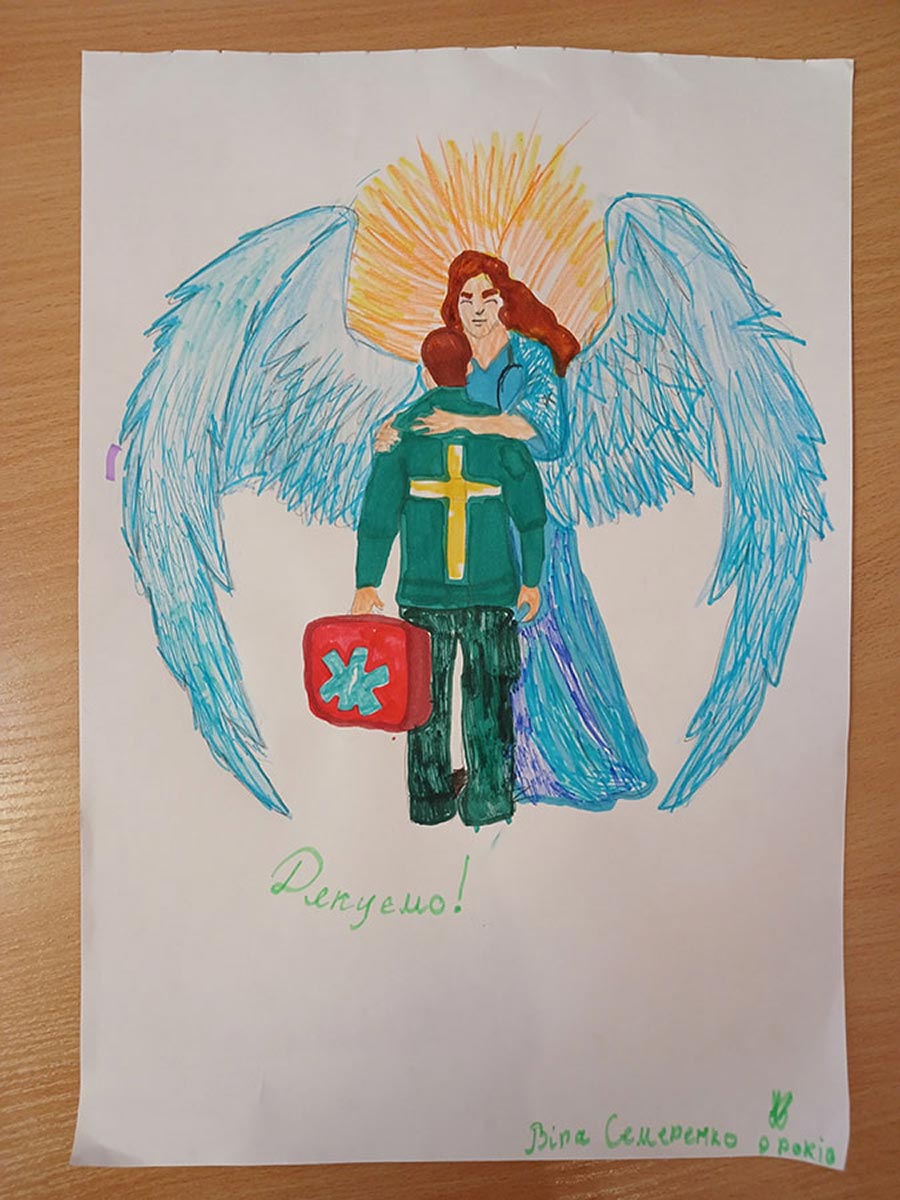
According to the artist Oleksandr Tanasiuk, who survived the occupation and left Kherson, this monument is needed, but not now, because the city is still very dangerous. “It’s not the right time to build something there yet. Perhaps we need a virtual monument, a museum where documents about every crime of Russia will be drawn up. There are fewer and fewer people there and they don’t care about monuments. But people will mature over time,” he says.
Street art by and for ordinary victims
Aside sites and events set up by administrations and NGOs, some citizens initiatives arise from spontaneous acts, such as art works in the well-known Knizhka market in Odesa, as well as in the main street of the city, Deribasivska Street. Like in Odesa, Kherson displays several street art initiatives, mostly inscriptions, poems, and drawings on windows covered with plywood, as markers of the war, in places where ordinary people become victims.
In 2023, paintings by Kherson artists appeared in the windows of the city that had been damaged during Russian attacks as part of an initiative by the NGO Centre for cultural development Totem. So far, this project of street exhibitions called “Afloat” has united more than 50 artists. “These are not just posters with artists’ works. We are constantly collecting and updating an archive of locations where these exhibitions can be located. These are not just paintings that appear in the city. Each street exhibition is something personal that the author wants to say to their city here and now,” the organizers say.
Oleksandr Tanasiuk has provided works for this project: one of them is about the flooding of the city during the explosion of the Kakhovka hydroelectric power station, when more than 30 civilians died. He says that it is about the eternal dichotomy of the struggle between evil and good, darkness and light, black and white, morally positive, and as an antagonist, morally negative and judgmental. “I did not want to make absolutely depressing paintings that would illustrate the dark side of what is happening, because there is so much anxiety and negativity in the lives of Kherson residents. But even the bright moments – the liberation of Kherson and the de-occupation – are filled with sadness and tears of those who left during this period of war. But the white balances the black and gives hope,” he says.
Last May 2025, Kherson artists organized the exhibition “(No) Time for Dreams” in Odesa in the bomb shelter of the Museum of Western and Eastern Art. Partly a project of the artist Valentyna Ivanova, it features works by children from Kherson who paint in bomb shelters. “Art is especially impressive when its medium is under threat,” Ivanova says. “It becomes emotional, deep, and at the same time holds old meanings and creates new ones. At such moments, ordinary things that we did not attach artistic significance to before, acquire a tremendous power. Like these children’s handprints made in a bomb shelter. Or the candle drawings on the ceiling of the basement where people were hiding during the occupation. It becomes a testimony,” she adds.
Sculptors and artists ask not to rush into monuments. But for Odesa’s professor of philosophy Dovgopolova it is necessary to collect information about them. “First of all, it’s about tact and trying to avoid retraumatization. (…) There is a demand for trauma treatment,” she says. “I want the practices of remembrance to be different, to be thoroughly discussed in the community and to have their own therapeutic effects. But there is one thing: authorities are solving these problems in a piecemeal way, we lack specialized communities that specialize in memorialization, and as a result, distrust between the authorities and the community is growing.”
This report was produced thanks to a grant from the Fondation Hirondelle/Justice Info. It brings together three articles published in July 2025 in "Intent Press".


